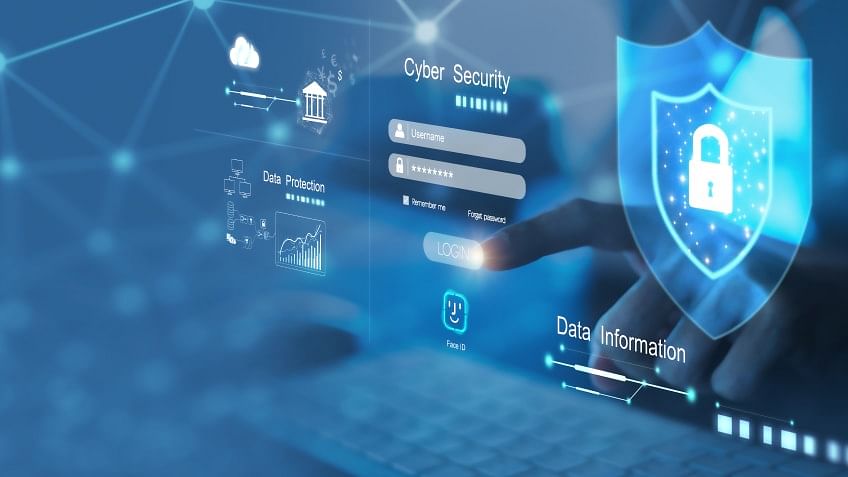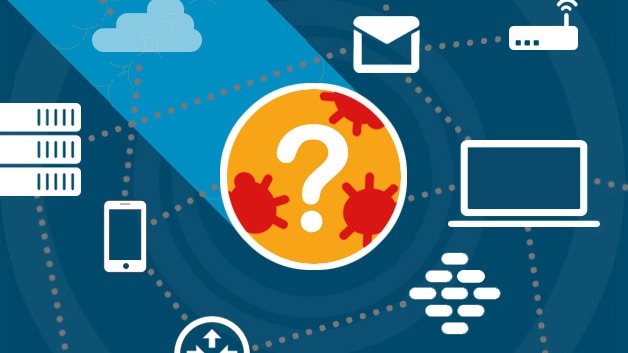Data and Network Security: Key Strategies to Safeguard Your Digital Infrastructure
Data and Network Security: Key Strategies to Safeguard Your Digital Infrastructure
Blog Article
Just How Data and Network Protection Safeguards Versus Emerging Cyber Threats
In an era marked by the quick development of cyber dangers, the importance of data and network protection has never been a lot more obvious. Organizations are progressively reliant on innovative safety and security measures such as encryption, accessibility controls, and proactive surveillance to secure their digital assets. As these dangers end up being more intricate, recognizing the interplay between information safety and network defenses is necessary for alleviating dangers. This discussion intends to check out the crucial parts that fortify an organization's cybersecurity posture and the approaches required to remain ahead of possible vulnerabilities. What continues to be to be seen, nonetheless, is how these steps will certainly advance when faced with future difficulties.
Comprehending Cyber Risks

The ever-evolving nature of innovation continually presents brand-new vulnerabilities, making it critical for stakeholders to continue to be vigilant. People may unwittingly succumb social design strategies, where aggressors adjust them into disclosing sensitive info. Organizations face one-of-a-kind obstacles, as cybercriminals typically target them to manipulate important information or interfere with operations.
Additionally, the surge of the Internet of Points (IoT) has actually expanded the assault surface area, as interconnected devices can work as entrance points for attackers. Acknowledging the value of durable cybersecurity practices is important for minimizing these risks. By promoting a comprehensive understanding of cyber individuals, hazards and companies can execute reliable techniques to guard their electronic assets, making sure strength despite an increasingly intricate risk landscape.
Secret Parts of Information Safety
Making sure information safety calls for a multifaceted approach that encompasses numerous vital parts. One basic aspect is information file encryption, which changes delicate info into an unreadable format, accessible only to authorized individuals with the suitable decryption keys. This functions as a vital line of defense against unauthorized gain access to.
Another vital part is accessibility control, which controls who can watch or manipulate information. By applying stringent individual authentication methods and role-based gain access to controls, companies can lessen the danger of insider dangers and data violations.

Furthermore, data masking techniques can be employed to protect delicate details while still permitting for its usage in non-production atmospheres, such as testing and development. fft perimeter intrusion solutions.
Network Security Strategies
Carrying out robust network safety and security techniques is important for safeguarding an organization's electronic facilities. These strategies entail a multi-layered strategy that consists of both hardware and software solutions made to secure the integrity, confidentiality, and schedule of data.
One critical part of network safety is the deployment of firewall programs, which work as a barrier in between trusted inner networks and untrusted outside networks. Firewalls can be hardware-based, software-based, or a combination of both, and they help filter outgoing and incoming traffic based upon predefined safety guidelines.
Additionally, more tips here invasion discovery and prevention systems (IDPS) play a vital function in keeping track of network website traffic for dubious activities. These systems can signal administrators to possible breaches and take activity to mitigate dangers in real-time. On a regular basis updating and covering software application is also critical, as vulnerabilities can be made use of by cybercriminals.
In addition, carrying out Virtual Private Networks (VPNs) guarantees safe remote access, encrypting information sent over public networks. Segmenting networks can decrease the attack surface and consist of possible breaches, limiting their impact on the general facilities. By embracing these approaches, companies can successfully strengthen their networks versus arising cyber threats.
Best Practices for Organizations
Developing finest practices for organizations is crucial in keeping a solid safety pose. An extensive approach to information and network safety begins with regular threat evaluations to identify susceptabilities and possible risks.
Additionally, continual worker training and awareness programs are crucial. Workers should be enlightened on acknowledging phishing attempts, social design strategies, and the relevance of sticking to security methods. Regular updates and spot administration for software program and systems are likewise essential to secure against understood susceptabilities.
Organizations should examine and establish case reaction intends to guarantee readiness for prospective breaches. This consists of establishing clear interaction channels and functions throughout a safety case. Furthermore, data encryption need to click here now be employed both at rest and in transportation to safeguard sensitive details.
Lastly, performing regular audits and conformity checks will certainly help ensure adherence to pertinent regulations and recognized plans - fft perimeter intrusion solutions. By adhering to these ideal practices, organizations can considerably improve their strength versus arising cyber hazards and protect their vital possessions
Future Trends in Cybersecurity
As companies browse an increasingly complex digital landscape, the future of cybersecurity is poised to develop considerably, driven by moving and arising technologies threat paradigms. One prominent trend is the integration of expert system (AI) and machine learning (ML) into security structures, permitting for real-time hazard discovery and action automation. These innovations can evaluate substantial quantities of data to identify anomalies and possible violations much more efficiently than traditional approaches.
One more important pattern is the rise of zero-trust style, which needs constant verification of customer identities and tool protection, no matter their location. This strategy lessens the risk of expert dangers and enhances defense against external strikes.
Additionally, the boosting adoption of cloud solutions necessitates durable cloud safety strategies that resolve special vulnerabilities connected with cloud atmospheres. As remote job ends up being an irreversible fixture, protecting endpoints will additionally end up being extremely important, causing a raised focus on endpoint discovery and response (EDR) options.
Last but not least, regulatory conformity will certainly remain to shape cybersecurity techniques, pushing companies to embrace extra strict information security actions. Embracing these fads will be important for companies to fortify their defenses and browse the advancing landscape of cyber risks properly.
Conclusion
In conclusion, the implementation of durable information and network safety actions is crucial for companies to protect against arising cyber dangers. By utilizing security, access control, and effective network protection methods, organizations can significantly lower vulnerabilities and protect delicate information.
In a period noted by the rapid advancement of cyber dangers, the importance of information and network safety and security has actually never been more pronounced. As these threats come to be much more intricate, comprehending the interaction between information safety and security and network defenses is crucial for alleviating risks. Cyber hazards encompass a vast range Visit Website of destructive activities aimed at endangering the privacy, honesty, and availability of networks and data. A detailed approach to data and network protection begins with routine threat assessments to recognize susceptabilities and prospective risks.In conclusion, the application of durable data and network safety measures is crucial for organizations to secure versus arising cyber threats.
Report this page